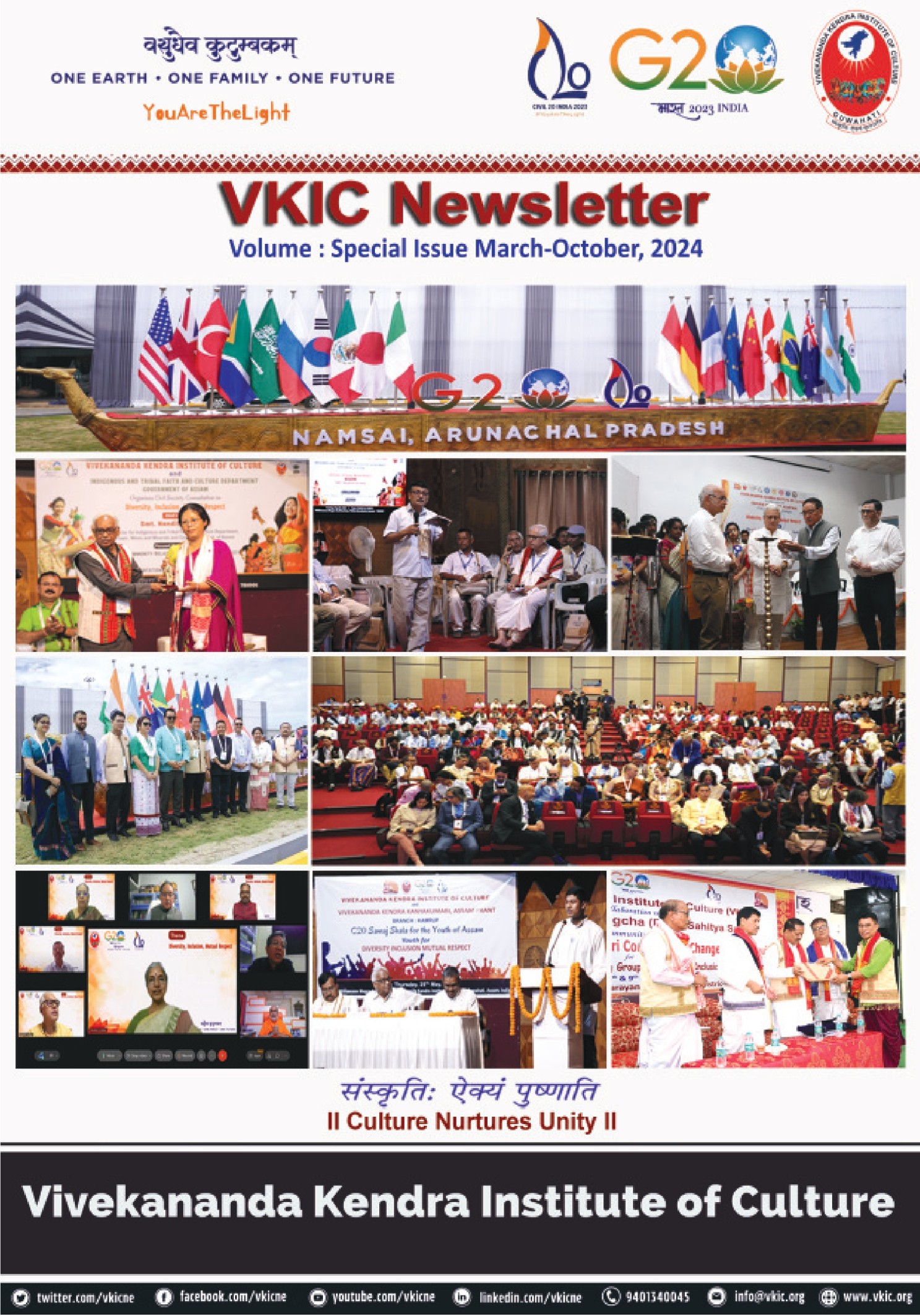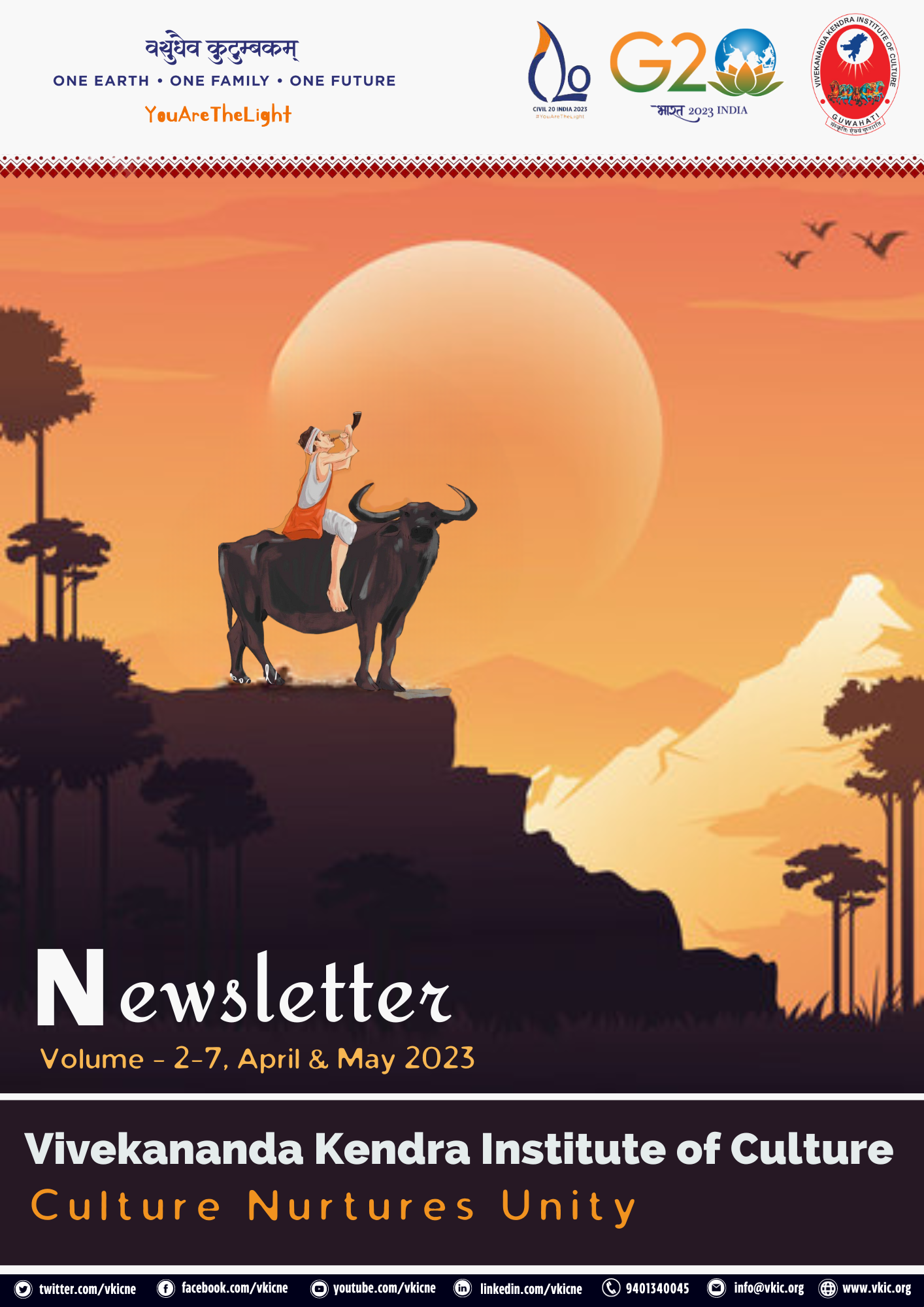The agriculture sector of India in contemporary times faces two challenges. One, intensification of land use to raise food production for the rising population, and two, the challenges posed by natural resource degradation and climate change caused particularly by variable rainfall and extreme weather events. Research and development in agriculture science and technology, along with policy support of the state through provisioning of financial resources and subsidies though have able to address the challenges, the process however have generated negative externalities on ecological front. It is observed that ecology factor in agriculture operations gets little emphasis.
In such context there is growing recognition, but the role of knowledge of local communities and cultural practices which consider ecology factor in adaptation process to ensure efficiency as well as sustainability of agriculture operations are largely undervalued. The communities of northeast region of India living in constrained landscape and marginal land have been following certain practices (culture of agriculture) which are efficient and resilient in the given physical setting, thus require documentation and analysis.
Evidences show that some indigenous farming systems have developed by the communities using their ingenuity and skill taking advantages of the otherwise constrained landscapes. P S Ramakrishnan tells about exceptionally high energy efficiency of Ziro valley’s agro-ecosystem (practiced by Apatani tribe), which is often considered far superior system than many traditional wet rice cultivations of plains of India. This is largely result of how the local people views the space and landscape they live and evolve a system. There are observable applications of local innovative knowledge on agriculture cycles; how the village authorities govern the agriculture land and plan to plant different varieties of crops reading the environmental and ecological variables. It is also observed that the adopted practices are not rigid to accommodate changes and ensure distributive justice in the communities. The communities read well the water availability factor and geographical advantages and constraints to ensure food and nutritional security.
In addition, the practices followed in agriculture operations by the communities have become the way of life or culture (different from what we observe at present with conversion community members to specific faith systems and regular practices) guiding the societies. Each step of agriculture operations, from initiation of clearing of land to harvesting of crops there are associated cultural practices, the relevance of which, though waned away have inherent significance, require documentation and analysis.
This issue of Quest plans to incorporate articles and learn from the diverse and locally evolved agriculture systems of the north east region, and their management practices in the dynamic environment. The need is also to understand how the modern scientific community and research on agriculture read the traditional practices, contribute and complement to ensure efficiency and sustainability of the agriculture systems of the region.
The journal invites articles on the following broad themes –
- Agriculture practices of the communities of the northeast region, and the social and cultural means of the practices – past and present scenario
- Land resources, seeds and water management of the communities
- Research and developments in science and technology to complement efforts of traditional farming systems and cultural practices towards ensuring efficiency and sustainability
The journal invites full length research papers (6000-8000 words), commentary (within 2500 words), notes from the field (within 2500 words), communications (1500 words) and book reviews (1500 words) on the themes.
Kindly note: Please provide an abstract of your article in about 300 words along with Key Words.
Given below is a style sheet based on the Oxford Style of Referencing.
Please send the hard or soft copy to:
The Director,
Research Advisory Council
Vivekananda Kendra Institute of Culture,
M.G. Road, River side,
Uzan Bazar, Guwahati- 781001
Phone No.: 0361-2510594
Email: [email protected]
Style Sheet
- Papers should be between 3000 and 4000 words and submitted as a word document with 1.5 spacing and in Times New Roman font 12. A soft copy, along with the hard copy is required to be submitted.
- An Abstract of around 150 words should accompany the Paper.
- Oxford Style Referencing should be followed.
Note: At the top of the cover “Article for Quest” should be written
Superscript numbers with corresponding endnotes should be used whenever information or ideas from sources are discussed. Sources such as books, journals, reports, newspapers, interviews, radio, television and information from the Internet must be acknowledged.
EXAMPLES
- Book, single author - S. Kostof, A History of Architecture: Settings and Rituals, 2nd edn, Oxford University Press, New York, 1995, p. 35
- Book, 2 authors - H. Fraser & R. Joyce, The Federation House: Australia's Own Style, Lansdowne Press, Sydney, 1986.
- Book, 3 authors - F.S. Kleiner, C.J. Mamiya & R.G. Tansey, Gardner's Art Through the Ages, 11th ed, Harcourt College Publishers, Fort Worth, 2001.
Chapter in edited book
EH Gombrich, 'The early Medici as patrons of art' in EF Jacob (ed.), Italian Renaissance Studies, Faber and Faber, London, 1960, pp. 279-311.
Report, group author
Parliamentary Standing Committee on Public Works, Proposed Common Use Infrastructure on Christmas Island, Parliament of the Commonwealth of Australia, Canberra, 2002.
Journal article
RA Goldthwaite, 'The Florentine palace as domestic architecture', American Historical Review, vol. 77, no. 4, 1972, pp. 977-1012.
Journal article, no author
'Federation Square: A Tribute to the Skill of the Construction Industry', Construct in Steel, vol. 15, no. 2, June 2002, pp. 12-14. 9.
Newspaper article, authored
Crafti, S, 'Winning Design Moored in Spain', The Age, 25 August 2010, Business Day, p. 16.
Website
1. Author
2. Name & place of sponsor of site
3. Date site was created or updated
4. Date of viewing
5. URL


